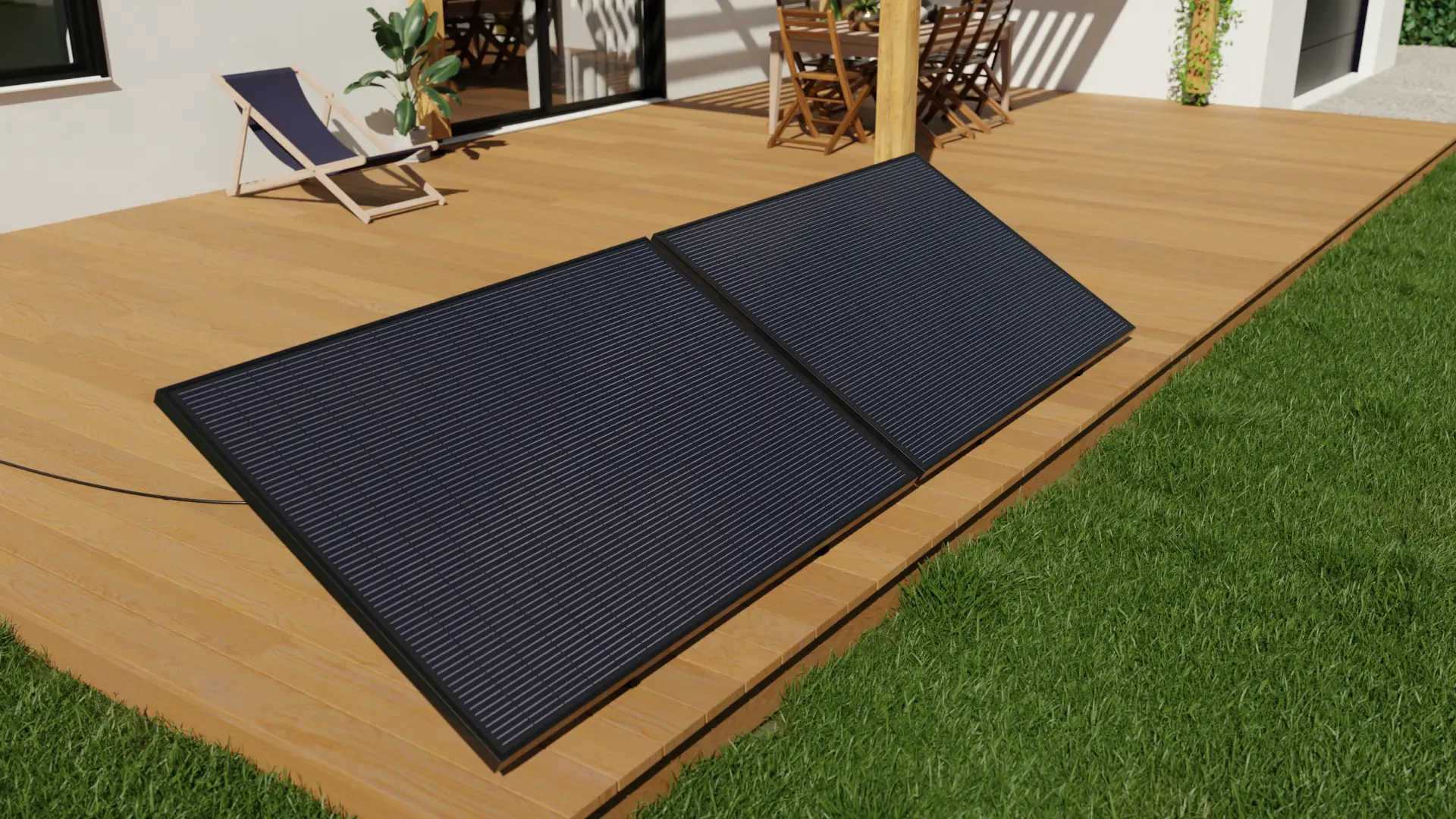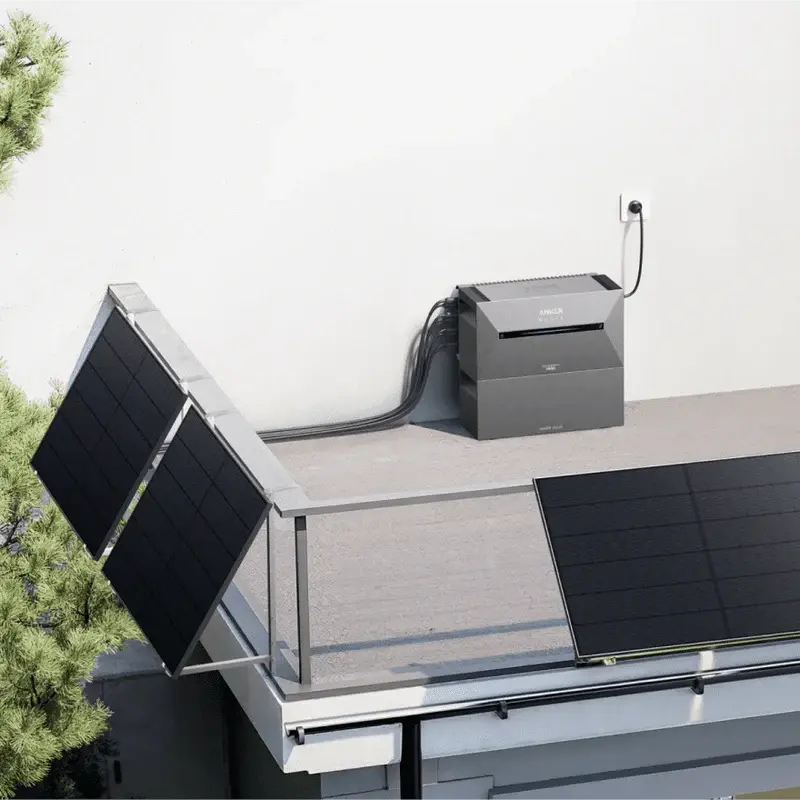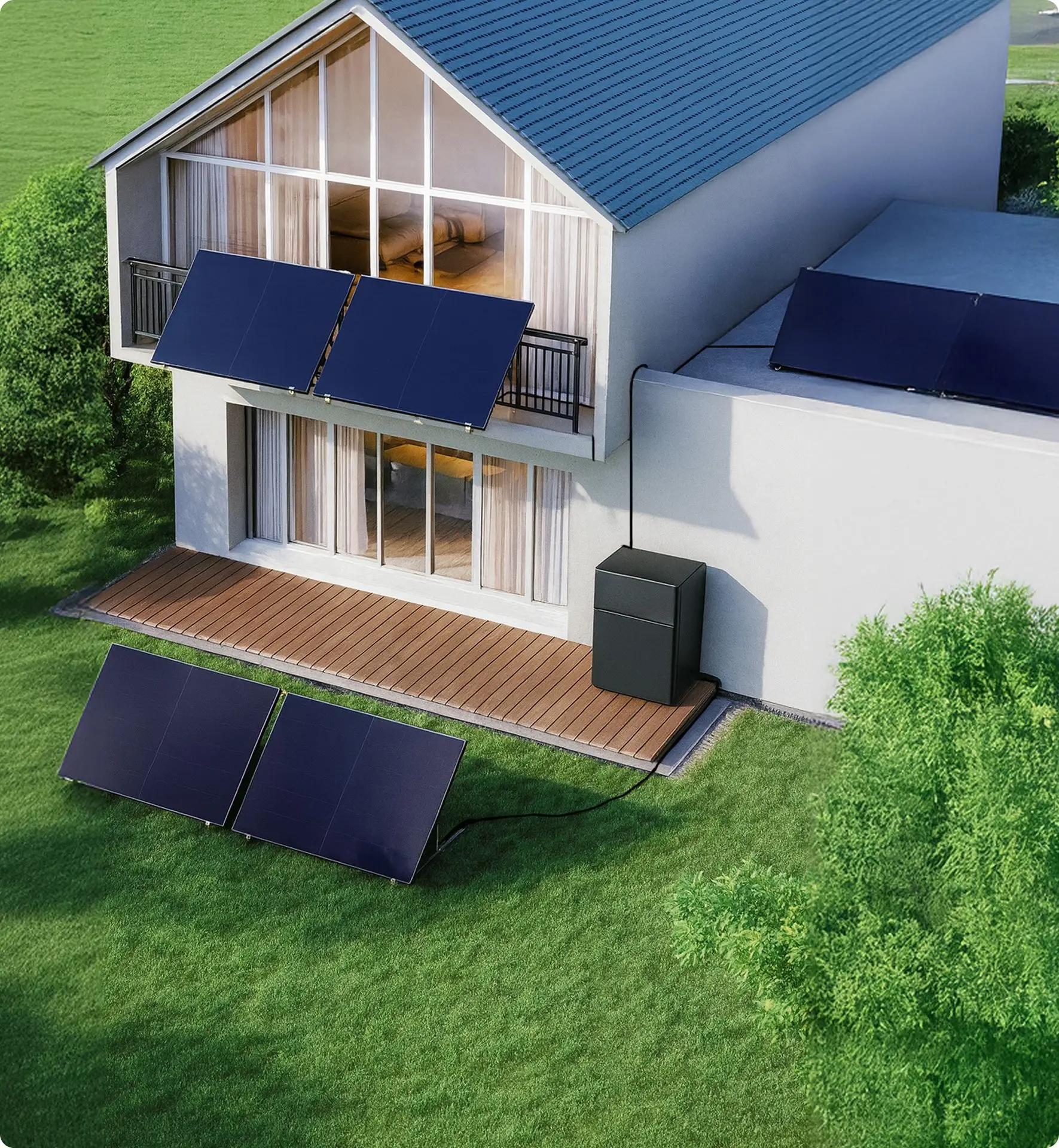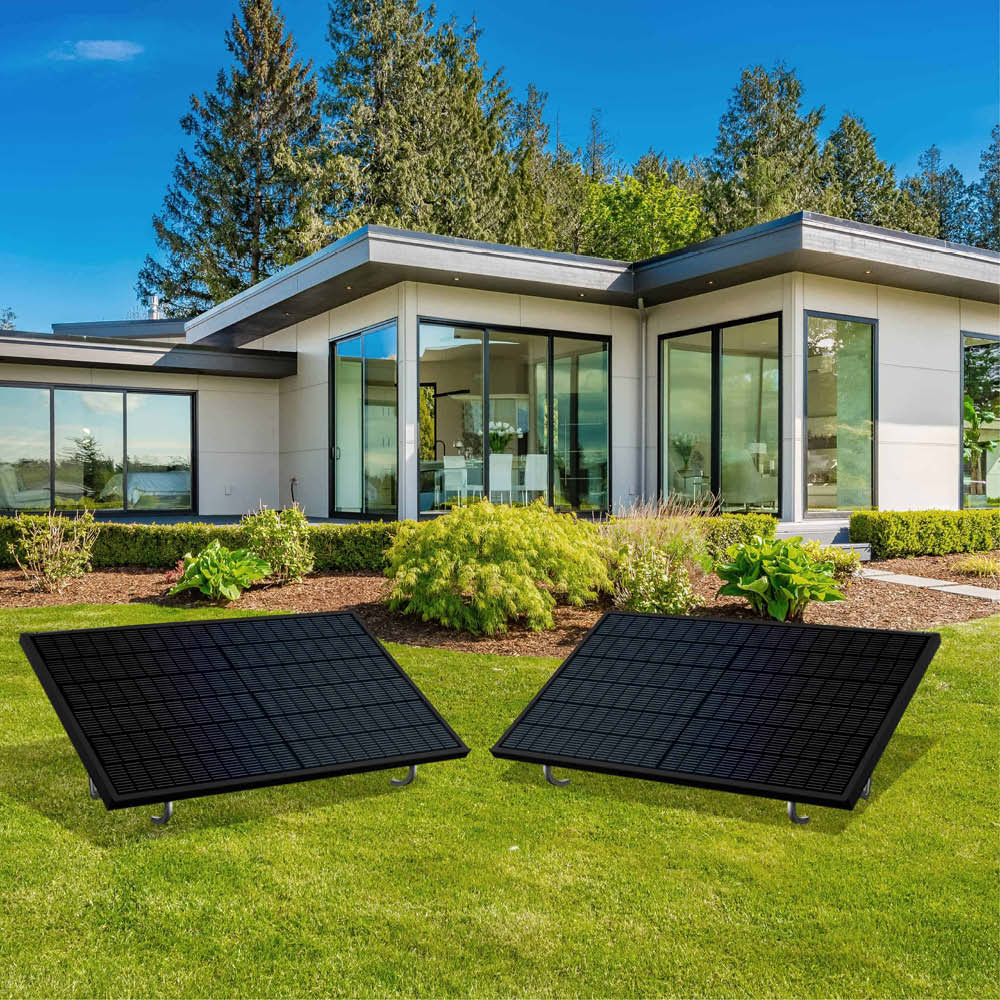What is Plug & Play
What are Plug & Play
solar panels
Plug & Play zonnepanelen – ook wel plug-in systemen, zonnepanelen met stekker, micro-PV of balkon zonnepanelen genoemd – zijn compacte zonnepanelensets die je eenvoudig zelf kunt installeren. Je sluit ze rechtstreeks aan op een standaard stopcontact, waarna ze onmiddellijk stroom leveren aan je woning.
Deze stekkerklare zonnepanelen wekken duurzame energie op zonder dat je een elektricien of keuring nodig hebt. Ze bestaan uit één of meerdere panelen met geïntegreerde micro-omvormer en kunnen worden gecombineerd met een thuisbatterij om energie op te slaan.
Plug-and-Play zonnepanelen zijn ideaal voor wie in een appartement woont, huurt of geen vaste installatie op het dak wil. Ze zijn betaalbaar, makkelijk te plaatsen en even eenvoudig weer los te koppelen bij een verhuis – zo neem je je zonne-energie gewoon mee.
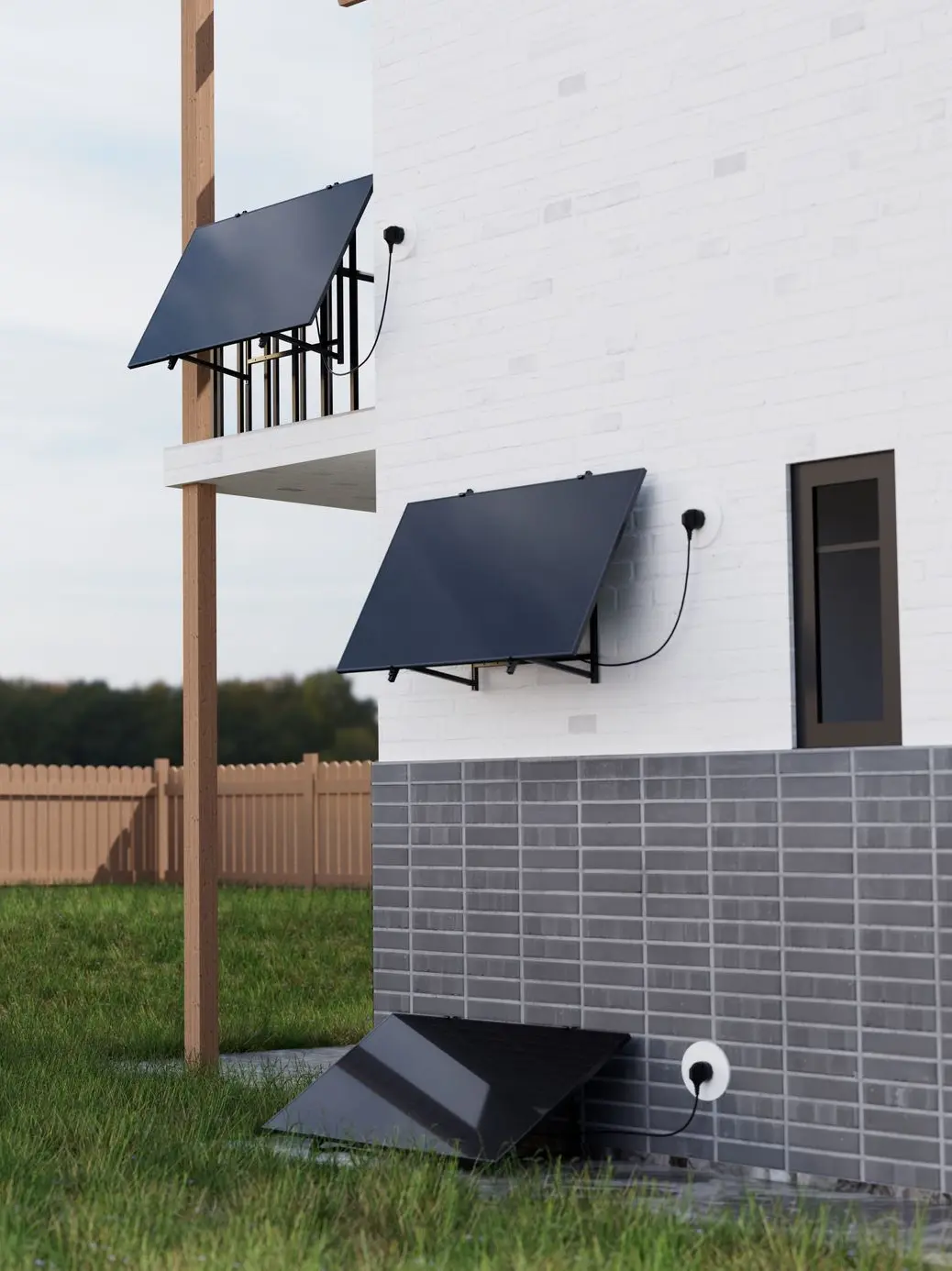
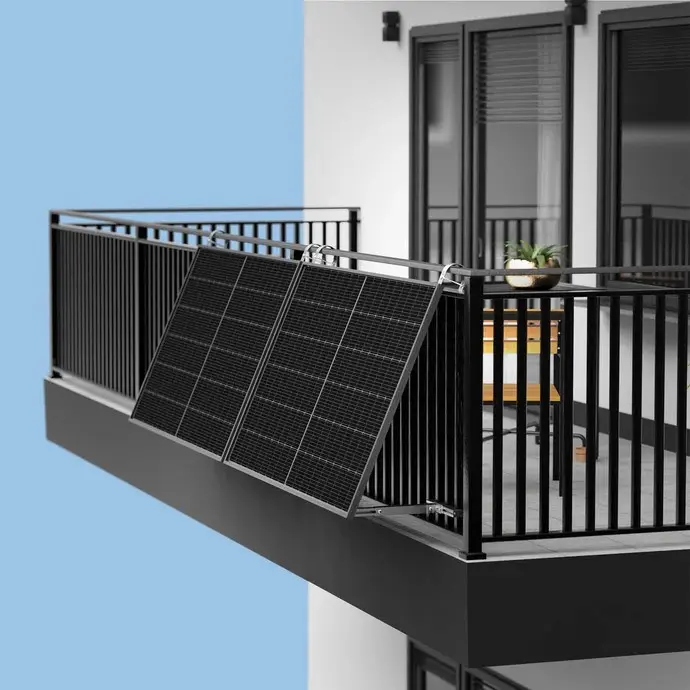
Placement: on the roof, in the garden, at the balcony, on the facade
Plug & Play zonnepanelen – ook wel plug-in zonnepanelen, zonnepanelen met stekker, micro-PV of balkonpanelen genoemd – kun je eenvoudig zelf plaatsen, zonder installateur. Je zet de panelen op een plat dak, tuinhuis, carport, balkon, gevel of in de tuin, waar ze het meeste zonlicht ontvangen. Hoe beter de oriëntatie, hoe hoger je opbrengst aan groene stroom.
Bij Sustix vind je complete plug & play zonnekits met alle montagematerialen die je nodig hebt voor elke situatie – van platte daken tot balkons of tuinafsluitingen. De systemen zijn veilig, Synergrid-gekeurd en ontworpen voor een snelle installatie in minder dan 30 minuten.
Wil je nog meer rendement halen uit je energie? Combineer de zonnepanelen met een plug-and-play thuisbatterij van Sustix en sla je eigen stroom op voor later gebruik. Zo gebruik je maximaal je zelf opgewekte energie en bespaar je nog meer.

Easy to install yourself.
You don’t need an installer for plug & play solar panels — you can easily connect them yourself. Simply place the panels and plug them into a grounded power outlet.
Home battery
Plug & Play thuisbatterijen slaan overtollige zonne-energie op zodat je die later kunt gebruiken, bijvoorbeeld ’s avonds of op bewolkte dagen. Zo verlaag je je verbruik van het elektriciteitsnet en bespaar je structureel op je energiekosten.
Met een dynamisch energiecontract kun je de slimme batterij bovendien goedkoop opladen wanneer de stroomprijs laag is en ontladen wanneer elektriciteit duurder is. Daardoor verdien je je Plugin batterij nog sneller terug.
Deze stekkerklare thuisbatterijen zijn beschikbaar in verschillende merken en opslagcapaciteiten, en worden vaak gecombineerd met plug & play zonnepanelen voor een compleet, zelfvoorzienend energiesysteem.
Elke energieopslagbatterij bestaat uit een omvormer en de batterij zelf. Sommige modellen zijn all-in-one systemen, waarbij de omvormer en batterij geïntegreerd zijn in één compact toestel – eenvoudig te installeren en direct klaar voor gebruik.


Realtime energy-insights
Je kunt het energieverbruik van je woning en de opbrengst van je Plug & Play zonnepanelen eenvoudig meten met een slimme energiemeter. De meest gebruikte is de Smart Plug – een stopcontactmeter die toont hoeveel stroom je apparaten verbruiken of hoeveel je stekkerzonnepanelen opwekken. Daarnaast is er de P1 energiemeter, die je rechtstreeks aansluit op de P1-poort van je slimme meter voor een volledig overzicht van je energieproductie en -verbruik.
Heb je een Plug & Play thuisbatterij of batterij met stekker? Dan kun je via de app van de fabrikant verbinding maken met je energieopslagsysteem. Zo zie je in real time hoeveel zonne-energie je opwekt, opslaat en verbruikt — per dag, week of zelfs op elk moment.
De meeste apps tonen ook de actuele energieprijzen per kWh, zodat je precies weet hoeveel je bespaart of verdient door je Plug & Play batterij slim te gebruiken. Zo krijg je niet alleen inzicht in je energieverbruik, maar haal je ook het maximale rendement uit je plug-in zonne-energiesysteem.

What is the payback period of a plug-and-play solar panel system?
De terugverdientijd van stekkerzonnepanelen of een plug & play zonnepanelenset hangt af van verschillende factoren, zoals de aankoopprijs van de panelen, de elektriciteitsprijs, je verbruik en het verdwijnen van de terugdraaiende teller.
Dankzij de steeds lagere kostprijs van plug-in zonnepanelen en de stijgende energieprijzen ligt de terugverdientijd tegenwoordig gemiddeld tussen 2 en 3 jaar voor een set tot 800 Wp. Daarna leveren je zonnepanelen met stekker pure besparing op – elke kWh die je zelf opwekt, hoef je niet meer van het net te halen.
Frequently asked questions

Plug & Play zonnepanelen of zonnepanelen met stekker zijn compacte zonnepanelensets die je zelf kunt aansluiten op een gewoon stopcontact in huis. Ze wekken zonne-energie op via een geïntegreerde micro-omvormer en leveren die rechtstreeks aan je elektrische toestellen, net zoals een klassiek apparaat dat stroom verbruikt.
Deze systemen worden ook wel stekkerklare zonnepanelen, balkonpanelen of Plugin zonnepanelen genoemd. Ze bestaan meestal uit één of meerdere zonnepanelen, een micro-omvormer, een stevige montageconstructie en een standaard netsnoer.
Het grote voordeel? Je hebt geen installateur of keuring nodig – je kunt ze zelf plaatsen op je terras, balkon, muur of plat dak. Binnen een half uur zijn ze gebruiksklaar en begin je meteen met het opwekken van je eigen duurzame energie.
Plug & Play zonnepanelen – ook wel plug-in systemen genoemd – werken anders dan klassieke zonne-energie-installaties. In plaats van een vaste aansluiting op het elektrische paneel worden ze gewoon in een standaard stopcontact gestoken, net als een huishoudelijk toestel.
Het grootste verschil met traditionele fotovoltaïsche systemen is de eenvoud: je hebt geen ingewikkelde installatie of verplichte elektricien nodig. De set is ontworpen om direct aan te sluiten en meteen stroom te leveren aan je woning.
Deze systemen zijn bovendien compacter dan gewone dakinstallaties. Ze bestaan meestal uit één tot vier panelen en zijn ideaal voor wie wil starten met zonne-energie op een eenvoudige en betaalbare manier, zonder keuring of grote werken.
A typical plug-in solar kit includes one or two solar panels, a micro-inverter (which converts the generated electricity into usable power for your home), and a connection cable with a standard plug. Some systems also include a portable battery for energy storage, or an app for monitoring and management.
We Als uw dak ongeschikt is (klein, schaduw, slechte oriëntatie) of het budget te hoog ligt, kan een plug & play systeem een haalbare oplossing zijn. Enerzijds kunnen sommige van deze plug-in systemen worden gekocht met een budget van minder dan 500 euro incl. btw. Anderzijds kunnen deze systemen worden geïnstalleerd op een kleiner oppervlak van uw dak of op andere locaties zoals uw balkon, een discrete hoek van uw terras, uw tuin of bevestigd aan een muur.
De rendabiliteit van plug-in PV-systemen is over het algemeen vergelijkbaar met die van klassieke PV-installaties. Omdat deze toestellen flexibeler geplaatst kunnen worden, kunnen ze vaak beter georiënteerd worden, wat hun opbrengst verhoogt. Zoals bij elk PV-systeem hangt het rendement af van verschillende factoren: het geïnstalleerde vermogen (Wp), de locatie van de modules, uw verbruiksprofiel, het aandeel zelfverbruik van de opgewekte stroom, uw huidige elektriciteitskost (€/kWh), het type elektriciteitscontract (vast of variabel, enkelvoudig of tweevoudig uurtarief, capaciteitstarief…), het toekomstige tariefkader (toekomstige time-of-use), en ook de waarde van de stroom die u injecteert, enz. In België varieert de terugverdientijd van plug-in systemen meestal tussen 3 en 10 jaar, afhankelijk van de situatie. Deze toestellen zijn ontworpen om 20 tot 30 jaar mee te gaan. Wat vaststaat, is dat een hoog aandeel zelfverbruik een belangrijke hefboom blijft om de rendabiliteit te maximaliseren, ongeacht of u kiest voor een klassiek vast systeem of een plug-in oplossing. Daarnaast is natuurlijk ook de kostprijs van het “plug & play” systeem een zeer belangrijke factor voor de rendabiliteit van de investering.
Hoeveel je bespaart met Plug-and-Play zonnepanelen hangt af van je elektriciteitsprijs en het type systeem dat je kiest. Een plug-in systeem van 800 W wekt jaarlijks ongeveer 984 kWh op, wat bij een stroomprijs van € 0,36 per kWh neerkomt op een besparing van zo’n € 210 per jaar.
Kies je voor een krachtiger plug & play systeem van 2000 W, dan kun je tot 1790 kWh per jaar opwekken — goed voor een besparing van ongeveer € 385.
De besparing loopt nog verder op als je er een thuisbatterij of opslagsysteem aan toevoegt. Zo kun je tot 100% van je zelfgeproduceerde energie gebruiken en over 30 jaar tot wel € 28.000 besparen op je elektriciteitsfactuur.
Plug-and-Play zonnepanelen zijn ook interessant voor wie al een klassieke PV-installatie heeft. Met één of twee extra plug-in modules kun je eenvoudig je productiecapaciteit vergroten en je directe zelfverbruik verhogen.
Deze toestellen zijn ideaal voor tijdelijke of extra energiebehoeften, zonder dat je je bestaande installatie hoeft aan te passen. Dankzij hun compacte formaat en eenvoudige plaatsing vormen ze een flexibele en modulaire uitbreiding van je zonne-energiesysteem.
U kunt een plug-in zonnepanelen set op verschillende plaatsen installeren, op een balkon of gevel, een tuinhuis, tuin, terras, plat dak, een zonnig stuk grond…. Het belangrijkste is om een locatie te kiezen die is blootgesteld aan de zon en zo is gekanteld dat de maximale output wordt geproduceerd op de momenten die u wilt, waarbij schaduw moet worden vermeden en ervoor moet worden gezorgd dat u voldoet aan alle plaatselijke of gemeentelijke voorschriften. Het gebruik van verlengsnoeren of stekkerdozen wordt afgeraden.
De levensduur van zonnekits is over het algemeen goed, met garanties op de panelen tot 25 of 30 jaar. Fabrikanten bieden meestal garanties op de verschillende onderdelen van deze systemen (omvormers, kabels, bevestigingen), variërend van 12 jaar tot 30 jaar voor sommige modellen. Als ze veel worden verplaatst, kunnen de systemen iets sneller verslijten. De levensduur van draagbare batterijen hangt af van hun technologie en gebruik (aantal laad-/ontlaadcycli), maar is doorgaans 10-15 jaar, afhankelijk van het model.
Terwijl de meeste West-Europese landen een maximum stellen van 600 W of 800 W voor de PV plug-in omvormer, stelt de Belgische federale regelgeving momenteel geen specifieke vermogenslimiet voor deze systemen. U zou dus theoretisch meerdere systemen kunnen installeren, maar om veiligheidsredenen wordt dit niet aangemoedigd. De Europese Commissie beveelt aan om een maximale vermogenslimiet van 800 W per circuit in te voeren voor plug-in systemen. De Belgische regionale overheden onderzoeken momenteel de noodzaak van dit plafond (max 800 W recent bevestigd in Vlaanderen). Afgezien van het veiligheidsaspect hangt het maximale vermogen dat u kunt overwegen voor uw woning in België af van de technische limieten van uw elektrische installatie en elektriciteitsbehoeften. Het is cruciaal om nooit meerdere installaties op hetzelfde stopcontact aan te sluiten om overbelasting te voorkomen. Controleer ook de capaciteit van uw elektrische installatie.
De enige systematisch verplichte verandering is de aanschaf van een digitale elektriciteitsmeter. Als u nog een oude elektromechanische meter hebt, wordt deze meestal gratis vervangen door uw distributienetbeheerder. In veel gevallen zijn er geen andere aanpassingen nodig, omdat deze systemen ontworpen zijn om rechtstreeks op een standaard stopcontact te worden aangesloten. Als u echter twijfels hebt over de capaciteit van een elektrisch circuit of de kwaliteit van uw elektrische installatie, bijvoorbeeld als de installatie oud is, kunt u uw installatie het beste laten controleren door een elektricien. Zo vermijdt u het risico op overbelasting van het elektrische circuit waarop de plug & play-apparatuur wordt aangesloten.
In de meeste gevallen is er geen ingewikkelde installatie of tussenkomst van een technicus nodig bij de aankoop van een plug & play systeem. Deze systemen worden meestal geleverd met DIY-fixatie en hoeven alleen maar in een stopcontact gestoken te worden. In bepaalde gevallen kan het echter raadzaam zijn om een elektricien in te schakelen. Het is belangrijk om de instructies van de fabrikant te volgen en de basisveiligheidsmaatregelen in acht te nemen.
In het geval van een stroomstoring op het net zal een plug & play PV-systeem niet werken. Deze systemen zijn ontworpen om elektriciteit te injecteren in het elektriciteitsnet wanneer het actief is en gaan in de veiligheidsmodus in geval van een stroomstoring om elk elektrisch risico voor uw huisinstallatie en het elektriciteitsnet te vermijden. Ze zijn over het algemeen niet uitgerust voor stand-alone werking.
Not with a conventional plug-in system with a standard socket. Most of these systems are designed to be connected to the electricity grid to power your devices and potentially feed excess back into the grid. Their main purpose is self-consumption of the produced electricity, with a connection to the existing electricity network. However, there are also other systems specifically designed for autonomous operation outside the electricity grid, with various features and purposes (for example, to charge a smartphone, laptop, or other small USB-C devices).
Plug & play-systemen zijn ontworpen om losgekoppeld, getransporteerd en elders opnieuw geïnstalleerd te worden. Door hun mobiliteit zijn ze een flexibele oplossing, waardoor ze
gemakkelijker kunnen verhuizen of tijdelijk in een andere woning kunnen worden gebruikt. De distributienetbeheerders moeten echter op de hoogte worden gebracht van het bron- en bestemmingsadres van het plug & play-systeem. Als de apparatuur naar een ander land of regio wordt getransporteerd, moet u natuurlijk de regelgeving in uw bestemmingsadres controleren.
Plug-in systems are already profitable in Belgium on their own, which explains why there are currently no specific support measures or subsidies provided for these devices.
Bij het bepalen van het optimale bijkomende vermogen spelen verschillende economische factoren mee, zoals uw verbruiksprofiel, de tariefstructuur van uw elektriciteitsfactuur (vast, variabel, dag-/nachtmeter, capaciteitstarief, dynamisch tarief, enzovoort). In de praktijk volstaat het vaak om één of twee panelen toe te voegen om basisverbruik (zoals koelkast of sluimerverbruik) deels te dekken, of om het systeem in te zetten voor het gedeeltelijk opladen van een elektrische wagen. Het vermogen van een plug & play systeem wordt daarnaast beperkt door technische factoren zoals de staat en capaciteit van uw binneninstallatie, de beschikbare plaats, en door eventuele regionale of lokale voorschriften (zoals stedenbouwkundige regels of de 800 W vermogenslimiet). in systemen zijn in België op zichzelf al rendabel, wat verklaart waarom er momenteel geen specifieke steunmaatregelen of premies voor deze toestellen voorzien zijn.
Net zoals bij een vaste PV-installatie of een thuisbatterij, is het aanbevolen om de voorwaarden van uw brand- of woonverzekering te controleren. In sommige gevallen is een voorafgaande melding van de installatie vereist om een volledige dekking te waarborgen.
Flanders
You have a digital meter
▪ het totaal vermogen van uw totale installatie is < 800 W: geen aanmeldings- of registratieplicht (registratie) bij Fluvius
▪ het totaal vermogen van uw totale installatie is > 800 W: aanmelding (registratie) bij Fluvius is verplicht binnen de 30 dagen na ingebruikname (https://www.fluvius.be/nl/in-de-kijker/plug-en-play-toestellen)
You have an electromechanical (analogue) meter
▪ het totaal vermogen van uw totale installatie is < 800 W: aanmelding (registratie) bij Fluvius is verplicht binnen de 30 dagen na ingebruikname (https://www.fluvius.be/nl/in-de-kijker/plug-en-play-toestellen
▪ het totaal vermogen van uw totale installatie is > 800 W: aanmelding (registratie) bij Fluvius is verplicht binnen de 30 dagen na ingebruikname (https://www.fluvius.be/nl/in-de-kijker/plug-en-play-toestellen. Afterwards, a digital meter will be installed. While waiting for this replacement, a prosumer tariff will be applied.
BRUSSELS AND WALLONIA
Aanmelding (registratie) bij Fluvius is verplicht voor alle vermogen (< 800 W of > 800 W) binnen de 30 dagen na ingebruikname (https://www.fluvius.be/nl/in-de-kijker/plug-en-play-toestellen
Just like with a fixed solar PV installation or a home battery, it is recommended to check the terms of your fire or home insurance. In some cases, prior notification of the installation is required to ensure full coverage.
In België is er geen maximaal toegelaten vermogen. In België kunt u dus meer dan 1, 2 of 3 plug & play panelen plaatsen. Wel is het zo dat, wat ook het totaal vermogen van uw plug & play zonnepaneel installatie is, er slechts maximum 800 Wat op uw thuisnet kan geïnjecteerd worden. Dit maximum vermogen van 800 W wordt automatisch geregeld door de micro-omvormer(s) of thuisbatterijen waarop uw zonnepanelen zijn aangesloten. De gehomologeerde toestellen zijn zo gefabriceerd en geconfigureerd.
